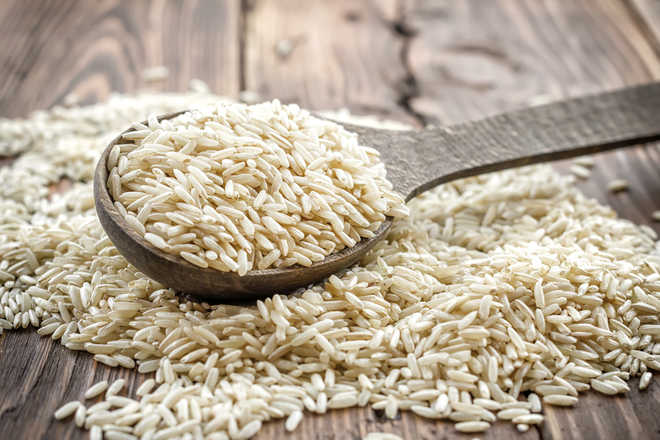Arsenic in Rice: The Hidden Danger in Your Daily Diet
And How to Protect Yourself From Long-Term Poisoning
Why Rice Is Still a Global Staple — Even When It’s Contaminated
Rice has fed humanity for thousands of years, especially in Asia, Latin America, and parts of Africa. Even in the United States, Americans consumed 4.8 million metric tons of rice last year, according to Statista.
It’s promoted as a “healthy” staple in many popular diets — but few people realize that much of today’s rice contains high levels of arsenic, a toxic heavy metal that can quietly damage your health over time.
How Arsenic Gets Into Rice
 Arsenic contamination in rice is not a rare occurrence. It’s largely caused by:
Arsenic contamination in rice is not a rare occurrence. It’s largely caused by:
Pesticides & herbicides used on crops for decades
Groundwater contamination from industrial and agricultural runoff
Rice’s natural tendency to absorb arsenic more than other grains
Even organic farms aren’t immune — if they share the same contaminated groundwater as nearby conventional farms, their rice can still contain arsenic.
Why Arsenic Is So Dangerous

Arsenic is a confirmed human carcinogen (aka poison) already known to cause:
Skin cancer
Lung cancer
Bladder cancer
Liver Cancer
Prostate Cancer
It also mimics common health problems, making it harder to detect. Chronic low-dose exposure can cause:
Red or swollen skin
New warts or lesions
Abdominal pain, nausea, or vomiting
Diarrhea
Irregular heartbeat
Muscle cramps
Tingling in fingers and toes
- Nerve damage
Because these symptoms are common, most people — and even doctors — attribute them to allergies, genetics, or unrelated illnesses.
The “Slow Poison” Problem
Mainstream medicine often blames genetics for chronic illness, but the constant, lifelong intake of small doses of toxins like arsenic plays a much bigger role than most realize.
This daily exposure comes from:
Grocery store foods (even “healthy” options)
Restaurant meals
Tap and bottled water
Grocery store snacks and juices
- Cosmetics
When arsenic builds up in your body over decades, it will silently weaken your immune system, damage your organs, and greatly increase your risk of all types of cancer.
What You Can Do to At Least Greatly Reduce Arsenic Consumption In Your Diet
Limit rice consumption or even better, stop eating rice or choose low-arsenic varieties like basmati from India or Pakistan, if your state allows rice imports from other countries, which most do not, since The Rice Mafia (aka the government), works hard at blocking rice imports.
Rinse rice thoroughly before cooking and cook it in excess water, draining the water after cooking, but this will only remove any surface arsenic-residue, not any of the arsenic-residue inside the rice itself.
Choose a variety of grains such as quinoa, millet, or oats to reduce exposure, at least organic of course, though even organic is not 100% Arsenic-free.
Switch to 100% clean foods that are tested for arsenic and all other toxins, for example, MealBetix from The MealBetix Lifestyle.
The Clean Food Solution
If you want to detox arsenic buildup from every cell in your body and repair the damage, you need more than just “organic” — you need truly 100% clean food every day and actually replace your meals.
That’s exactly why I created MealBetix — the cleanest meal replacement on the planet!
✅ 100% Pesticide-Free
✅ 100% Glyphosate-Free
✅ 100% GMO-Free
✅ 100% Arsenic-Free
Are you ready to clean out a lifetime of arsenic buildup and finally take back your health?
 Dr Darren Wayne, aka The Food Guru, is one of the last Food Scientists not on Big Food’s payroll, not on Big Pharma’s payroll and not on anyone’s payroll, which means he has no agenda, other than to tell you as much truth as possible, before it’s too late. Read his latest best-seller, 80 Hormonal Health Myths Busted, before they censor it!
Dr Darren Wayne, aka The Food Guru, is one of the last Food Scientists not on Big Food’s payroll, not on Big Pharma’s payroll and not on anyone’s payroll, which means he has no agenda, other than to tell you as much truth as possible, before it’s too late. Read his latest best-seller, 80 Hormonal Health Myths Busted, before they censor it!



What about black rice, forbidden rice?
Great question, Pam. If we lived in an unpolluted world, black rice would undoubtedly be praised for its higher nutrient content and antioxidant properties, but unfortunately, all rice grown here is sprayed directly or indirectly. Now, I’m not saying you can’t ever eat rice, but you need to be aware that all rice here contains arsenic, just like all wild-caught fish contain mercury. I would say if you’re going to eat rice, you better at least also be drinking MealBetix daily, so the arsenic cannot build up inside you.
What can we do about this. Completely avoiding rice is not practical for most. What about brown rice?
That’s a great question Alan. Rice would definitely be hard to quit when it’s a staple in your diet, just like anything else someone depends on, but you should be able to decrease your consumption, then the only way to survive without developing serious illness is to replace 2 meals every day with MealBetix.
Wow..thank you!
You’re welcome Marian!